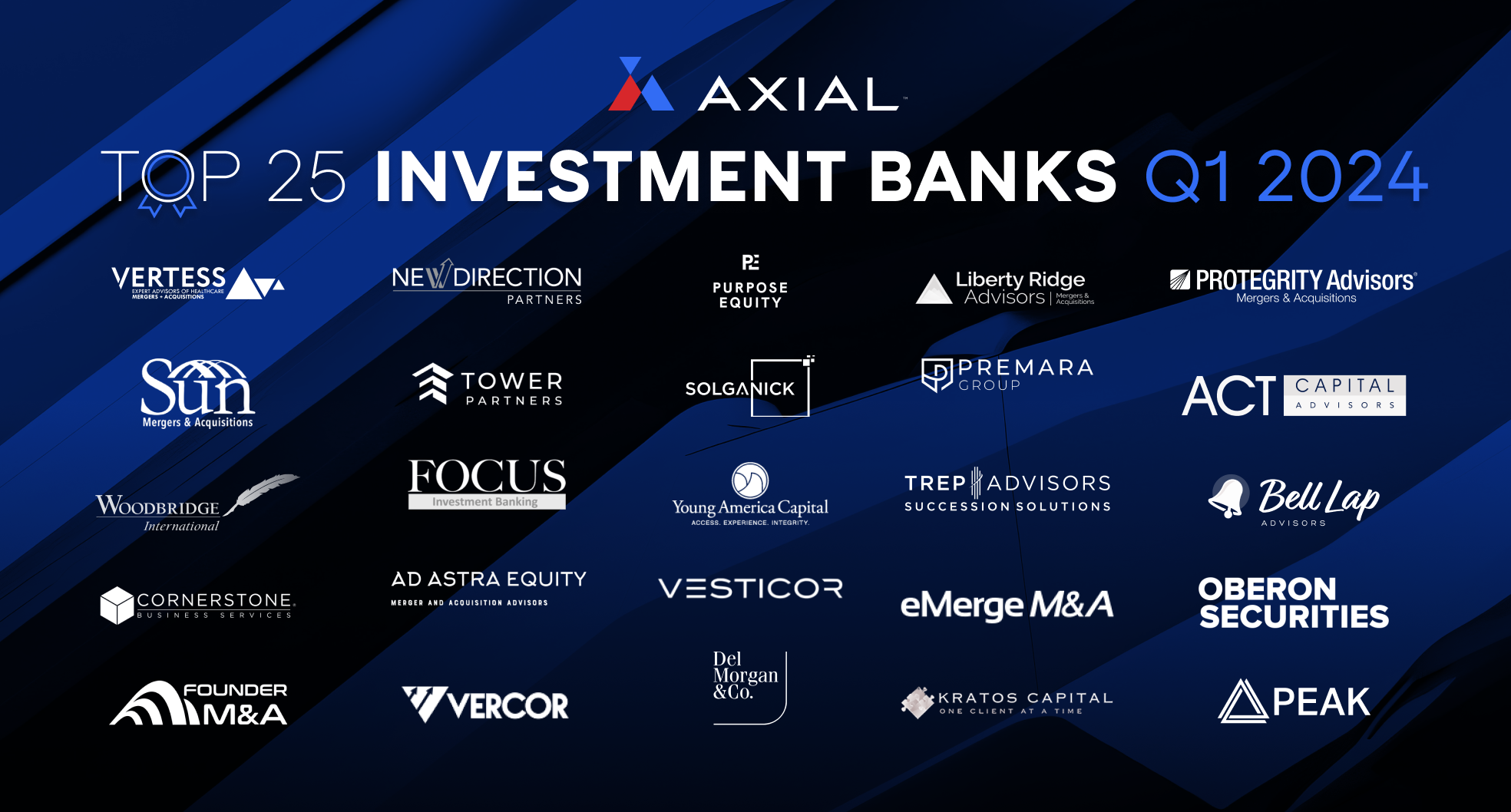
Top 25 Lower Middle Market Investment Banks | Q1 2024
Axial is excited to release our Q1 2024 Lower Middle Market Investment Banking League Tables. To assemble this list, we…
Tags
Even during a time where middle market companies are experiencing impressive growth, studies show that CEOs and owners of these businesses don’t understand or take advantage of a totality of their options.
We looked again at the National Center for the Middle Market’s (NCCM) 1st quarter report last week1 . Given the relevant size of the middle market – – nearly 200,000 businesses representing one-third of private sector GDP – – it’s a sector that deservedly receives attention. The NCCM does a fantastic job of tracking and analyzing this market with its quarterly survey of 1,000 C-suite executives from these companies.
NCCM reported that a large majority of middle market companies continue to thrive in 1Q2015, despite a decline in the number of companies reporting improved performance in the past quarter (64% versus 70% year-over-year). Companies reported mean revenue growth in the past year of 7.4% for firms with annual revenue between $10MM and $1B, versus 7.2% in the prior quarter. As compared to smaller companies, larger companies experienced higher growth.
Projections for future growth have moderated compared to earlier periods. 5.3% of firms reported expected growth, verses 6.0% in the prior quarter. Still, the majority of firms expect sustainable growth through increased sales and greater demand for products.
Innovation was named as a key driver of sustained growth, with nearly half of the firms having introduced a new product or service in the past 12 months, and 42% expecting to do the same this year. The statistics demonstrate a clear need for capital investment.
All this correlates with executives’ expectations for capital investment with about 60% reporting a need. “67% of firms say they would invest and 33% say they would keep their cash,” reports NCCM.
So, how do middle market companies finance their growth? In another report by the NCCM and Milken Institute2, we learned that companies in this sector prefer to fund growth from cash on hand rather than borrow. We have heard this from middle market companies since the recession, and our clients have supported the view. It’s not surprising, given the conservative nature of a mid-sized company, and the common lack of an economic cushion to sustain the company in bad times, resulting in an aversion to leverage.
We think it’s interesting that, when middle market companies seek financing for growth, the strong preference is for bank debt. 32% of small and middle market firms prefer bank credit, versus 10% from a non-bank lender. Only 8% expect to seek an equity investment, and often that is from family and friends versus the “wholesale” market.
True, bank debt can be relatively inexpensive and will, by its nature, avoid costly equity dilution to owners and other shareholders. But bank debt is usually limited by the amount of collateral a borrower can post, which can constrain a growth strategy. This constraint is aggravated when one considers that growth can be organic or inorganic and in the later case, given the generally seller-friendly M&A market, could theoretically prevent a mid-size company from making an acquisition and achieving it’s goals. Further, banks often have a finite amount of capital they are willing to provide companies with a particular credit profile, leaving little room for further expansion.
Don’t get us wrong – – we advocate the use of bank capital given it’s low cost. And, it is often more available to a mid-sized company when sourced from a local bank that understands the company and its owners better than a national multi-line bank. But, a blend of capital from a diversified group of bank and non-bank sources can expand the amount of capital available and offers the possibility of creative structuring to delay amortization or interest payments. For example, the use of equity-linked securities can enhance the middle market company’s access and ability to service debt capital.
Why don’t middle market companies apply more creativity in their debt financing? Certainly, there is an aversion to debt described earlier, and costs for non-bank credit are higher. A prior relationship with a banker can also drive owners’ action in sourcing capital. A more interesting explanation is awareness: NCCM reports that, excluding companies owned by sophisticated private equity firms, “less than one-third of all (middle market) firms are aware of nontraditional sources.”
All this said, middle market firms should spend some time investigating alternative sources for capital. Our experience is that non-traditional sources of capital are readily available in today’s market. Terms are often negotiable. A solid strategic plan that includes growth requires capital. The options are there for the taking.
—-
1NCCM, “1Q2015 Middle Market Indicator: From Growth to Stability,” 3/2015.
2NCCM, Milkin Institute, “Access to Capital: How Small and Mid-Size Businesses are Funding Their Futures,” 4/2015.
